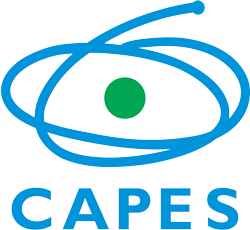The contributed abstract should have between 200 and 400 words, excluding authors and affiliations, and in LaTeX format.
The abstract and presentation must be in English.
The submission process is done in four steps:
1 - Choice of area, sort of presentation, title and additional information about the work.
2 - Authors and affiliations: the authors should be grouped by affiliations, separated by comma (,) and entered institution by institution. The presenting author must be preceded by asterisk symbol (*).
Names should follow the order:
First name (or initial and dot)
Middle name (or initial and dot)
Last name (full)
Example:
First Author, *Second Author, Third Author
or
F. Author, *S. Author, T. Author
(In this case, the second author is the presenter)
3 - Typing of abstract in the corresponding field. Mathematical formulas, index, superscript, subscript, etc, should be in LaTeX format (online help is available in the form)
4 - Abstract processing by the system. The process result (OK or ERROR) will be shown. In case of OK, confirm the submission. In case of ERROR, log file will be provided.
The posters should be 1m x 1m.
Submission Topics:
1. ATOMIC AND MOLECULAR PHYSICS
1.1 Electronic Structure and Dynamics of Atoms, Molecules and Clusters
1.2 Large Molecular Systems: Clusters, Proteins, Enzymes, Quantum Dots, DNA fragments, and Others
1.3 Exotic Atoms and Molecules
1.4 Atomic and Molecular Collisions
1.5 Photophysics and Spectroscopy of Atomic and Molecular Systems
1.6 Cold Atoms and Bose-Einstein Condensates
1.7 Solvation Effects
1.8 Optics and Atomic Physics
2. BIOLOGICAL PHYSICS
2.1 Physics of Biological Macromolecules: Dynamics, Function and Interactions
2.2 Physics of Membranes: Biological and Synthetic
2.3 Biological Networks
2.4 Biomechanics
2.5 Physics of Multi-cellular Processes
2.6 Dynamics of Biological Systems
2.7 Biological Materials: Synthesis, Characterization and Applications
2.8 Instrumentation for Biological Physics
2.9 New Methods in Biological Physics
3. MEDICAL PHYSICS
3.1 Radiation Therapy
3.2 Imaging Physics
3.3 Radiation Dosimetry
3.4 Nuclear Medicine
3.5 Biophotonics
3.6 Instrumentation for Medical Physics
3.7 Acoustics in Medicine
3.8 Biomechanics in Medicine
3.9 Magnetism in Medicine
3.10 Nanomedicine
4. OPTICS AND PHOTONICS
4.1 Quantum Optics
4.2 Optics and Atomic Physics
4.3 Optical Devices and Applications
4.4 Optical Materials and Nonlinear Optics
4.5 Lasers and Photonics
4.6 Nanophotonics, Nanooptics and Plasmonics
4.7 Biophotonics and applications
4.8 Ultrafast Optics and Time Resolved Dynamics
4.9 Optical Microscopy and Spectroscopy
5. STATISTICAL PHYSICS
5.1 Thermodynamics and Thermostatistics
5.2 Critical Phenomena and Phase Transitions
5.3 Non Equilibrium Phenomena
5.4 Disordered and Glassy Systems
5.5 Long-range Interactions
5.6 Growth Phenomena
5.7 Sociophysics and Econophysics
5.8 Biologically Motivated Problems
5.9 Other Complex Systems
5.10 Complex Networks
5.11 Nonlinear Dynamics and Chaos
5.12 Synchronization and Pattern Formation
6. INSULATORS AND DIELECTRICS
6.1 Growth, Structure, Properties and Defects
6.2 Oxides
6.3 Minerals and Geological Materials
6.4 Dielectrics
7. MAGNETISM
7.1 Dynamical Magnetization
7.2 Spintronics
7.3 Nano and Molecular Magnetism
7.4 Magnetism in Thin Films and Surfaces
7.5 Theory and Simulation in Magnetism
7.6 Magnetic Semiconductors
7.7 Magnetic Oxides
7.8 Magnetic Devices and Applications
7.9 Magnetocaloric Effect
8. METALS AND METALLIC ALLOYS
8.1 Structural, Mechanical and Thermodynamic Properties
8.2 Electronic, Transport and Optical Properties
9. NANOMATERIALS
9.1 Graphene: Monolayer and Multilayer
9.2 2D Materials Beyond Graphene and Van der Waals Heterostructures
9.3 Nanotubes
9.4 Nanowires
9.5 Nanoparticles
9.6 Quantum Dots
10. NON-CRYSTALLINE SYSTEMS
10.1 Glasses and Amorphous Materials
10.2 Quasicrystals
10.3 Natural Materials
10.4 Biomaterials
11. QUANTUM INFORMATION
11.1 Quantum Cryptography, Quantum Communication, and Quantum Measurement
11.2 Quantum Entanglement
11.3 Quantum Computing, Quantum Algorithms, and Quantum Simulation
11.4 Quantum Error Correction and Quantum Control
11.5 Open Quantum Systems and Decoherence
11.6 Physical Implementations of Qubits
11.7 Foundations of Quantum Theory and Quantum Thermodynamics
12. SEMICONDUCTORS
12.1 Spin-Dependent Phenomena
12.2 Defects and Doping
12.3 Heterostructures
12.4 Material Growth and Surfaces
12.5 Transport Properties
12.6 Optical Properties
12.7 Devices and Applications
12.8 Quantum Hall Effect
13. SOFT MATTER
13.1 Polymers: Structure and Dynamics
13.2 Polymers: Electronic and Optical Properties
13.3 Liquid Crystals and Complex Fluids
13.4 Organic Electronics and Photonics
13.5 Biological Fluids, Micellar Structures and Membranes
14. STRONGLY CORRELATED SYSTEMS
14.1 Metal-Insulator and Other Correlated Phase Transitions
14.2 Heavy Fermions
14.3 Non-Fermi Liquids
14.4 Complex Oxides
14.5 Correlated Electron Magnetism
14.6 Quantum Fluids and Quantum Solids
15. SUPERCONDUCTIVITY
15.1 Materials: Growth, Structure and Characterization
15.2 Theory, Models and Mechanisms of Superconductivity
15.3 Novel Superconductors: Fe-Based, MgB2, Organic, etc.
15.4 Dynamics and Pinning of Vortex Matter
15.5 Superconductivity at the Meso and Nanoscales
15.6 Superconducting Devices and Applications
16. SURFACES, INTERFACES AND THIN FILMS
16.1 Growth, Structure and Morphology
16.2 Surface Reactions and Catalysis
16.3 Electronic and Lattice Properties
16.4 Applied Surface Science
17. THEORY AND SIMULATION
17.1 Electronic Structure Methods
17.2 Classical Monte-Carlo and Molecular Dynamics
17.3 Quantum Many-Body Systems and Methods
17.4 Fluid and Polymer Simulations
18. TOPOLOGICAL MATTER
18.1 Topological Insulators
18.2 Weyl Semimetals
18.3 Majorana Systems
18.4 Topological Superconductors
18.5 Other Topological Systems
19. INSTRUMENTATION
19.1 Detectors, Sensors, & Transducers
19.2 Spectroscopic Techniques
19.3 Scattering & Diffraction
19.4 Microscopic and Scanning Probe Techniques
19.5 Signal Processing & Analysis
19.6 Thermal & IR Instrumentation
19.7 Other Instrumentation and Measurement Science
20. APPLICATIONS AND DEVICES
20.1 Energy Storage and Conversion
20.2 Photovoltaics
20.3 Thermoelectrics
20.4 Biofuels
20.5 Solid-State Lighting
20.6 Printed Electronics
20.7 Electroacoustic and Piezoelectric Applications and Devices
20.8 Applications of Composite and Hybrid Materials
21. DIVERSITY IN PHYSICS
21.1 Women Imbalance
21.2 Gender Minorities
21.3 Race & Ethnicity
21.4 Diversity & Inclusion
22. PHYSICS & SOCIETY
22.1 Science Outreach
22.2 Technological Innovation
22.3 Environmental Aspects
22.4 Other Topics
23. PHYSICS IN INDUSTRY & COMPANIES
23.1 Physicists in Industry & Companies: Areas & Activities
23.2 Intellectual Property Protection
23.3 Applied and Engineering Physics
23.4 Physics Innovation & Entrepreneurship
- TUTORIALS





